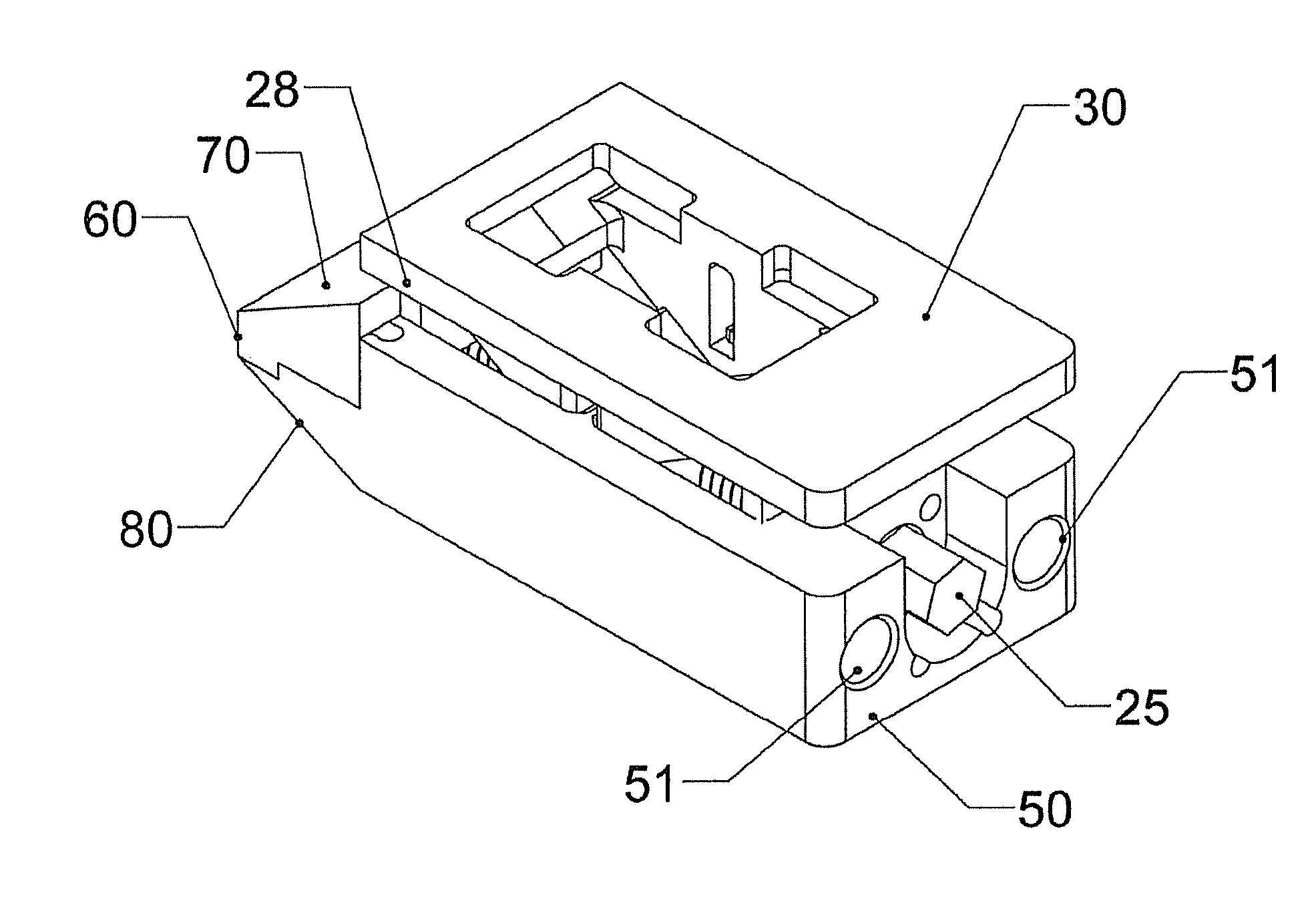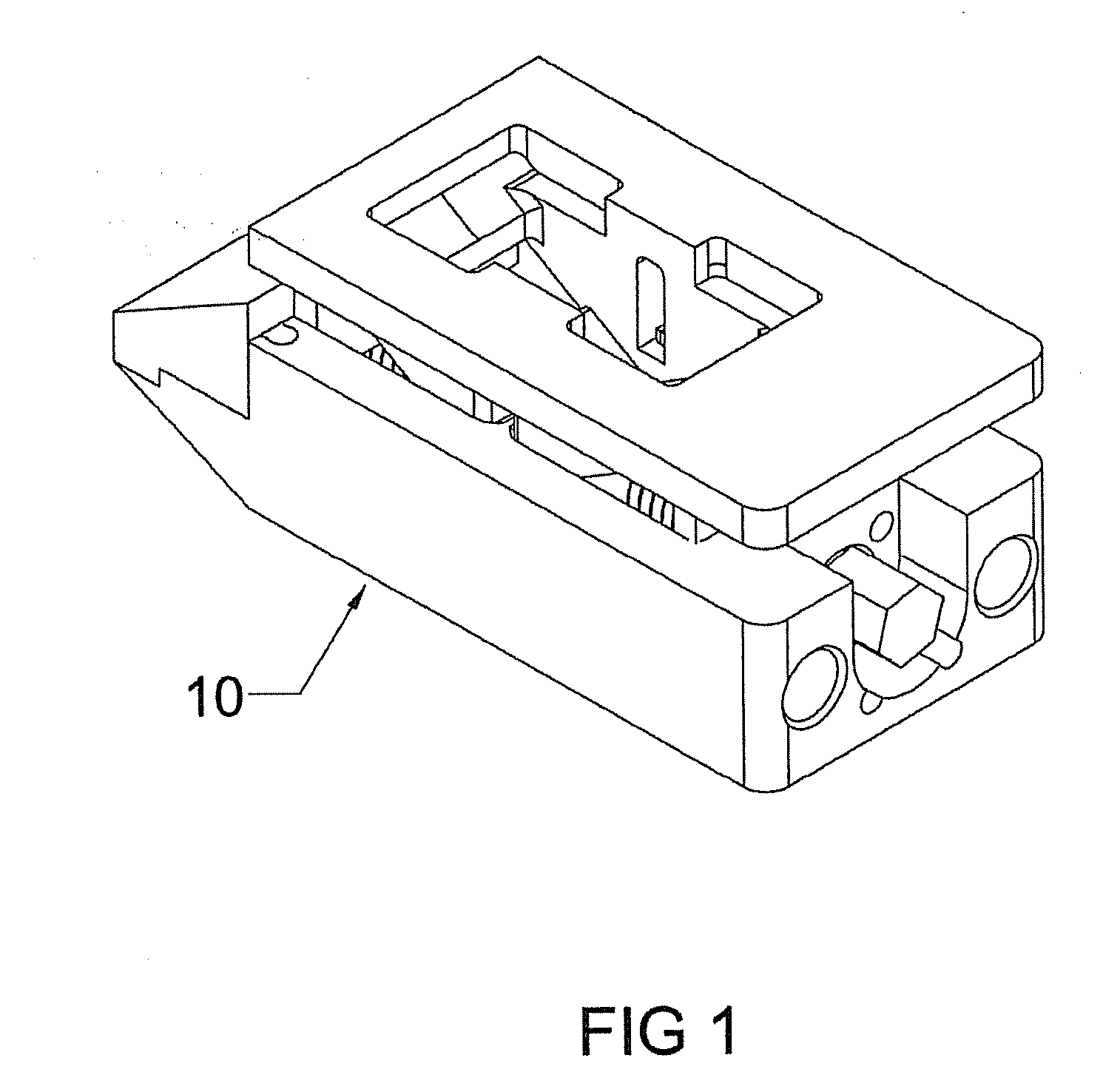Expandable Self-Anchoring Interbody Cage for Orthopedic Applications
a self-adjustable, interbody technology, applied in the field of interbody spinal fusion implants, can solve the problems of reducing surgical time, effort, complications, and difficult introduction of current devices into the body, and achieve the effects of maintaining and creating lordosis in the human spine, improving functionality and versatility, and being convenient to us
- Summary
- Abstract
- Description
- Claims
- Application Information
AI Technical Summary
Benefits of technology
Problems solved by technology
Method used
Image
Examples
Embodiment Construction
[0076]Various height change mechanisms of the expandable interbody cage 10 can be used to properly space adjacent vertebrae in the spine. Referring to FIGS. 1 through 5, the expandable interbody cage 10 is shown, which generally has a rectangular configuration with a flat top surface 30, a flat bottom surface 40 and a flat leading end 60 bullet nose 20 in a trapezoidal configuration with solid surfaces 60, 70, and 80, as shown in FIGS. 5 and 6. In the preferred embodiment, the top surface 30 is parallel to the bottom surface 40, while the expandable interbody cage 10 is an unexpanded or slightly expanded state, as shown in FIGS. 4 and 5. The top surface 30 and the bottom surface 40 form a support structure for bearing against adjacent vertebrae and when in a fully expanded state commensurate with the needs of a patient, the expandable interbody cage 10 creates an angular relationship is created that maintains the desired lordosis of the human spine. Referring to FIG. 3, in the prefe...
PUM
 Login to View More
Login to View More Abstract
Description
Claims
Application Information
 Login to View More
Login to View More - R&D
- Intellectual Property
- Life Sciences
- Materials
- Tech Scout
- Unparalleled Data Quality
- Higher Quality Content
- 60% Fewer Hallucinations
Browse by: Latest US Patents, China's latest patents, Technical Efficacy Thesaurus, Application Domain, Technology Topic, Popular Technical Reports.
© 2025 PatSnap. All rights reserved.Legal|Privacy policy|Modern Slavery Act Transparency Statement|Sitemap|About US| Contact US: help@patsnap.com



